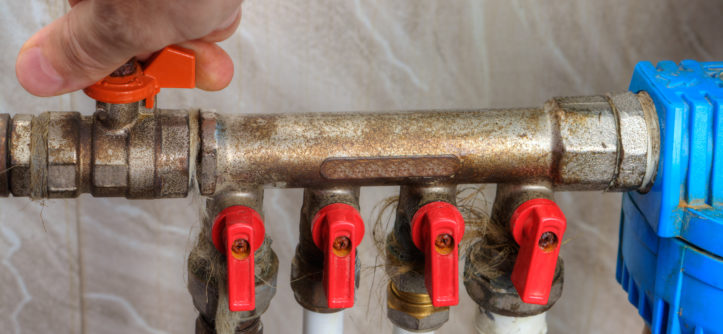There are many cleaning tasks that homeowners only tackle occasionally. They might save most of the heavy cleaning for once a week, or sometimes even once a year. During these deep cleaning sessions, they may clean windows, take down and wash curtains, scrub baseboards, and clean out closets. But one area that is often forgotten until there’s a problem is the plumbing. Most homeowners don’t realize that plumbing needs to be maintained regularly to avoid major issues. To help homeowners stay on top of that task, here is the ultimate plumbing checklist.
Table of Contents
Flush the water heater
Flushing your water heater out can keep your appliance functioning properly for the longest time possible. This especially needs to be done if you live in an area with hard water. The sediment that hard water leaves behind can cause clogs and leaks that could otherwise be prevented.

Check for leaks
Checking for water leaks should be a regular task around your house. Even slow leaks can cause structural damage, mold, or pipe corrosion. The main places to check are toilets, faucets, pipe joints, and basements. If you do detect leaks, it’s important to fix them right away. If the leak is in a pipe fitting, you can often tighten it or use plumber’s tape to patch it up. Also, be sure to take note of rust deposits or damage to your pipes that could be caused by unseen leaks. It’s important to call a professional right away if any of this damage is too extensive for you to repair.
Maintain the garbage disposal
The garbage disposal is one of those mysterious appliances that many homeowners don’t know how to use properly. They’re perfect for disposing of crumbs or food left behind on a plate, but if it’s used improperly, it’s easy to damage. For one thing, you should run cold water instead of hot when using it. This is to prevent greasy foods from liquifying and sticking to the sides of the disposal. Also, turn it on regularly, even when not in use. If the unit sits unused too long, the mechanics can rust and freeze up. Don’t put items like potato peels, oil, seeds, or starchy foods in the disposal, and be sure to regularly clean and freshen it up by tossing in a small piece of citrus peel while it’s running.
Clean out the drains
Slow-moving drains can be an indication you’re about to have a bigger problem. You can take some precautions to keep clogs to a minimum. First of all, avoid pouring any food or oily liquids down your drain. Secondly, always flush your drains thoroughly with very hot water after using your sinks, tubs, or showers. If you do start to notice a sluggish drain, start by pouring a mixture of equal parts vinegar and baking soda down it. After about an hour, flush it out with hot water. You can also clean out the U-shaped traps under your sinks manually if that’s where the problem is. But if DIY solutions don’t seem to work, don’t hesitate to call a service like Drain Doctor to unclog your drain.
Have your septic system inspected
Your septic system should be inspected annually to keep it in peak running condition. A professional will be able to assess your system for problems. They’ll check for things like cracks in the tank, leaks in the pipes, or roots in the drainfield. If they find any issues, they’ll be able to snake out any clogged lines, kill any roots, or repair any cracks. Having your system inspected regularly could save you thousands of dollars in preventable repairs.

